 Triumph Scrambler 1200 XC - Service manual > Fuel Handling Precautions
Triumph Scrambler 1200 XC - Service manual > Fuel Handling Precautions
General
The following information provides basic precautions which must be observed if petrol (gasoline) is to be handled safely. It also outlines other areas of risk which must not be ignored. This information is issued for basic guidance only and, if in doubt, appropriate enquiries should be made to your local Fire Officer.
Petrol - Gasoline
When petrol (gasoline) evaporates it produces 150 times its own volume in vapour which when diluted with air becomes a readily ignitable mixture. The vapour is heavier than air and will always fall to the lowest level. It can readily be distributed throughout any indoor environment by air currents, consequently, even a small spillage of petrol (gasoline) is potentially very dangerous.
WARNING
Petrol (gasoline) is highly flammable and can be explosive under certain conditions. When opening the fuel tank cap always observe all the following items: Turn the motorcycle ignition switch OFF.
Do not smoke.
Always have a fire extinguisher containing FOAM, CO2, HALON or POWDER close at hand when handling or draining fuel or fuel systems. Fire extinguishers must also be present in areas where fuel is stored.
Always disconnect the vehicle battery, negative (black) lead first, before carrying out, dismantling or draining work on a fuel system.
Whenever petrol (gasoline) is being handled, drained, stored or when fuel systems are being dismantled, make sure the area is well ventilated. All potential forms of ignition must be extinguished or removed (this includes any appliance with a pilot light). Any lead-lamps must be flame-proof and kept clear of any fuel spillage.
Warning notices must be posted at a safe distance from the site of the work to warn others that petrol (gasoline) is being openly handled. The notice must instruct the reader of the precautions which must be taken.
Failure to observe any of the above warnings may lead to a fire hazard which could result in personal injury.
WARNING
No one should be permitted to repair components associated with petrol (gasoline) without first having specialist training on the fire hazards which may be created by incorrect installation and repair of items associated with petrol (gasoline).
Repairs carried out by untrained personnel could bring about a safety hazard leading to a risk of personal injury.
WARNING
Draining or extraction of petrol (gasoline) from a vehicle fuel tank must be carried out in a well ventilated area.
The receptacle used to contain the petrol (gasoline) must be more than adequate for the full amount of fuel to be extracted or drained. The receptacle should be clearly marked with its contents, and placed in a safe storage area which meets the requirements of local authority regulations.
When petrol (gasoline) has been extracted or drained from a fuel tank, the precautions governing naked lights and ignition sources should be maintained.
Failure to observe any of the above warnings could bring about a safety hazard leading to a risk of personal injury.
Fuel Tank Removal
Fuel tanks should have a 'PETROL (GASOLINE) VAPOUR' warning label attached to them as soon as they are removed from the vehicle. In all cases, they must be stored in a secured, marked area.
Chassis Repairs
WARNING
If the motorcycle is involved in an accident or collision it must be taken to an authorised Triumph dealer for repair or inspection. Any accident can cause damage to the motorcycle, which if not correctly repaired, may cause a second accident which may result in injury or death.
The frame must not be modified as any modification to the frame such as welding or drilling may weaken the frame resulting in an accident.
Electrical Precautions
The following guidelines are intended to ensure the safety of the operator whilst preventing damage to the electrical and electronic components fitted to the motorcycle. Where necessary, specific precautions are detailed in the relevant sections of this manual which should be referred to prior to commencing repair operations.
Equipment - Prior to commencing any test procedure on the motorcycle ensure that the relevant test equipment is working correctly and any harness or connectors are in good condition, in particular mains leads and plugs.
WARNING
The ignition system produces extremely high voltages. Do not touch any part of the ignition system or any cables while the engine is running.
An electric shock caused by contact with the ignition system may lead to illness, injury or death.
WARNING
Wearers of surgically implanted heart pacemaker devices should not be in close proximity to ignition circuits and/or diagnostic equipment.
The ignition system and any diagnostic equipment may interrupt the normal operation of such devices causing illness or death.
WARNING
The battery contains harmful materials. Always keep children away from the battery whether or not it is fitted in the motorcycle.
Do not jump start the battery, touch the battery cables together or reverse the polarity of the cables as any of these actions may cause a spark which would ignite battery gases causing a risk of personal injury.
High Voltage Circuits - Whenever disconnecting live H.T. circuits always use insulated pliers. Exercise caution when measuring the voltage on the coil terminals while the engine is running. High voltage spikes can occur on these terminals.
Connectors and Harness - The engine of a motorcycle is a particularly hostile environment for electrical components and connectors. Always ensure these items are dry and oil-free before disconnecting and connecting test equipment. Never force connectors apart either by using tools or by pulling on the wiring itself. Always ensure locking mechanisms are disengaged before removal and note the orientation to enable correct reconnection. Ensure that any protective covers and substances are replaced if disturbed.
Having confirmed a component to be faulty, switch off the ignition and disconnect the battery negative (black) lead first. Remove the component and support the disconnected harness. When replacing the component keep oily hands away from electrical connection areas and push connectors home until any locking mechanism becomes fully engaged.
Battery Disconnecting
Before disconnecting the battery, switch off all electrical equipment.
WARNING
To prevent the risk of a battery exploding and to prevent damage to electrical components ALWAYS disconnect the battery negative (black) lead first. When reconnecting the battery, always connect the positive (red) lead first, then the negative (black) lead. Always disconnect the battery when working on any part of the electrical system.
Failure to observe the above warnings may lead to electrical damage and a fire hazard which could cause personal injury.
Always ensure that battery leads are routed correctly and are not close to any potential chafing points.
Disciplines
Switch off the ignition prior to making any connection or disconnection in the system.
An electrical surge can be caused by disconnecting 'live' connections which can damage electronic components.
Ensure hands and work surfaces are clean and free of grease, swarf, etc. as grease collects dirt which can cause tracking or high-resistance contacts.
Prior to commencing any test, and periodically during any test, touch a good earth to discharge body static. This is because some electronic components are vulnerable to static electricity.
Electrical Wires
All the electrical wires are either single-colour or two-colour and, with only a few exceptions, must be connected to wires of the same colour. On any of the two-colour wires there is a greater amount of one colour and a lesser amount of a second colour. A two-colour wire is identified by first the primary colour and then the secondary colour. For example, a yellow wire with thin red stripes is referred to as a 'yellow/red' wire; it would be a 'red/yellow' wire if the colours were reversed to make red the main colour.
See also:
 Triumph Scrambler 1200 XC - Service manual > Chassis Bearing Lubrication
Triumph Scrambler 1200 XC - Service manual > Chassis Bearing Lubrication
Note This information relates only to bearing lubrication. For the procedures necessary to replace a bearing, always refer to the relevant section of this Service Manual. Bearings installed in engine and transmission applications are not covered by this information. Refer to the Lubrication chapter or the relevant engine chapter for additional information.
 Triumph Scrambler 1200 XC - Service manual > Electrical Testing
Triumph Scrambler 1200 XC - Service manual > Electrical Testing
For any electrical system to work, electricity must be able to flow in a complete circuit from the power source (the battery) via the components and back to the battery. No circuit means no electrical flow. Once the power has left the positive side of the battery and run through the component it must then return to the battery on its negative side (this is called earth or ground). To save on wiring, connections and space, the negative side of the battery is connected directly to the frame or engine.
 Ducati Scrambler
Ducati Scrambler Fantic Caballero 500
Fantic Caballero 500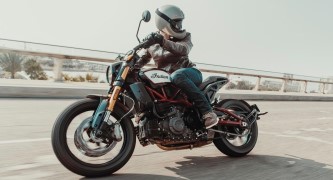 Indian FTR 1200
Indian FTR 1200 Moto Guzzi V85 TT
Moto Guzzi V85 TT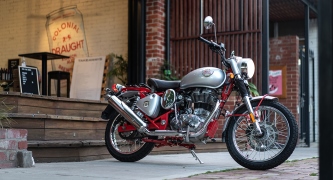 Royal Enfield Bullet Trials Works Replica
Royal Enfield Bullet Trials Works Replica Triumph Scrambler 1200 XE
Triumph Scrambler 1200 XE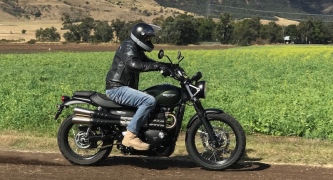 Triumph Street Scrambler
Triumph Street Scrambler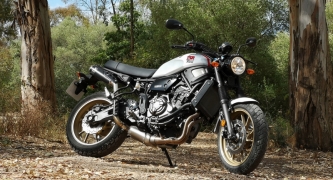 Yamaha XSR700
Yamaha XSR700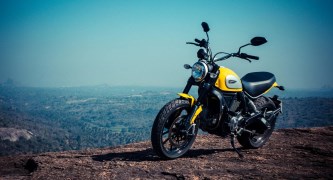 Ducati Scrambler 800
Ducati Scrambler 800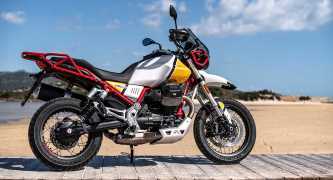 Moto Guzzi V85 TT
Moto Guzzi V85 TT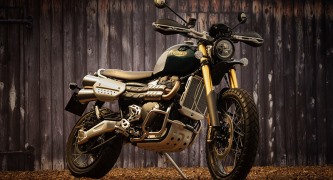 Triumph Scrambler 1200 XC
Triumph Scrambler 1200 XC